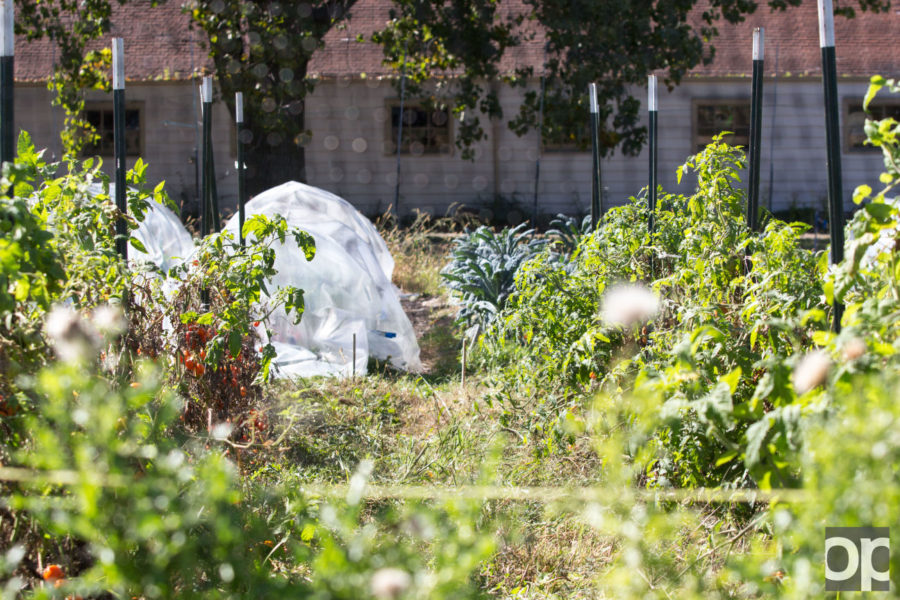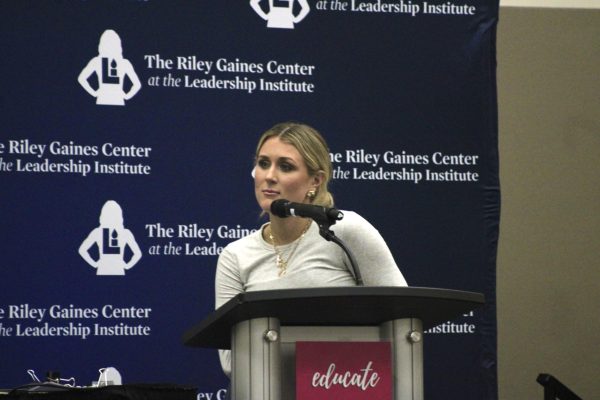Farmers foresee future fortune
Every Thursday, fresh produce is sold outside the Oakland Center. This produce is grown, harvested and sold by students, from a farm on campus.
“The farm was initiated and started by a group of students and a few faculty [in 2009],” Jarred Hanna, farm coordinator, said. “Business students and environmental science students wanted a way to teach each other how to grow food, so why not learn how to do it at the university?”
In 2010, the farm had its first ever growing season. But it was not until the following year that things started to pick up pace.
A grant for STEM (science, technology, engineering and mathematics) education brought forth food related STEM courses with service learning components, such as an Intro to Organic Farming class and a Permaculture class.
The grant, along with a collaboration between the Student Organic Farmers at Oakland University and the biological sciences department helped to make the farm thrive – due to the offered classes and an active student club.
“[The] classes are an excellent way to recruit new club members and volunteers to our community,” Katelyn Walton, president of the Student Organic Farmers at OU, said. “Students learn that you don’t necessarily have to be a science major to be passionate about sustainable farming and nutritious food.”
The key to the farm’s success boils down to those who work on it. Volunteers make up a majority of the workers on the farm and Hanna and other faculty rely on them and the food stand to create revenue.
According to Hanna, anywhere between 200-300 people a year get involved with the far. This ranges from volunteers, to other departments around the university utilizing the farm.
“We have volunteers, events, and the farm stand, which serves over 100 people a week and people from the community come and purchase our produce, not just students on campus,” Hanna said.
Due to the farm not being part of the university budget, it does not receive any direct funds from the university. This pushes those on the farm to create a good product and find the most effective way to distribute the product. Making the farm rely heavily on the volunteers, the revenue created by the food stands, and the popularity and quality of their product.
The popularity of farm has helped in more than one way and has raised significant funds to further the farm.
“The farm has received generous donations from the community, as well as grants for the hoop house, student employment, research and more,” Hanna said. “We have also received support from the Biological Sciences and the College of Arts and Sciences for our academic courses and student learning.”
The farm is located on Adams road and Butler road, at the Matilda Dodge farm, on a seven acre site. However, the farmers can only use a half acre of that, with a quarter acre of that space used for growing.
Even with limited space, Hanna states that they grow between 6,000 and 10,000 pounds of food a year.
“Everything we do, plan, and teach we make available for a low cost for the university through our campus farm stands,” said Hanna.
With popularity of the farm growing beyond campus and supply and demand becoming the biggest challenge, Walton would like to see more expansion.
“It is our dream to expand the farm on a larger scale – maybe more hoop houses [a solar house which doubles the growing season of the farm without using additional fossil fuels] – which would allow us to have greater crop yields, Walton said. “But with expanding fields, that means we need more helping hands around the farm.”












